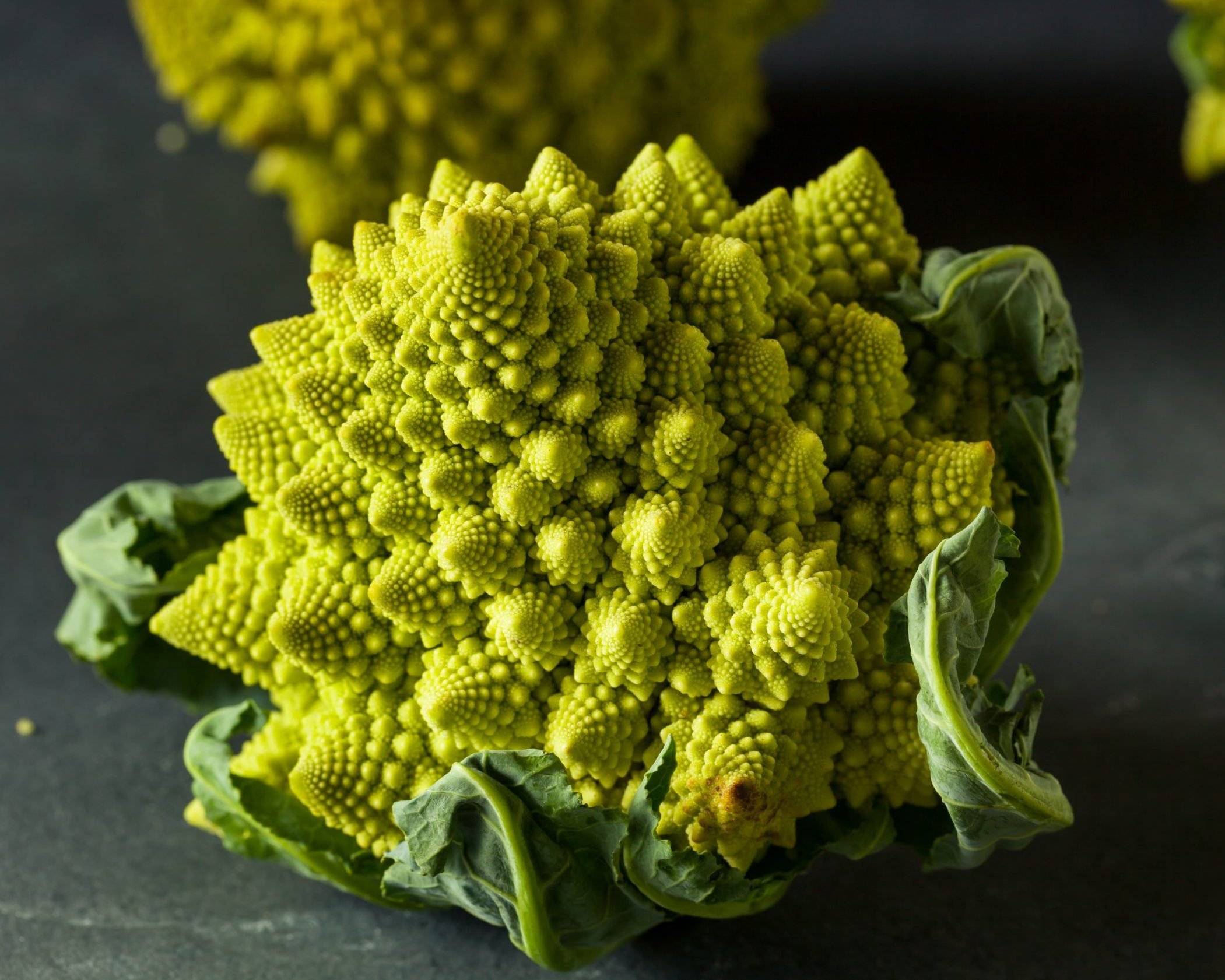The Golden Ratio (and the Seed of All Living Things)
Somewhere in the grocery aisle, if you’re lucky, and it’s in season - you might come across a head of Broccoli Romanesco. Easily natures most psychedelic (looking) vegetable. Long a favourite illustration of fractality in nature (each of it’s many florets emulates the shape and spiral of the whole), it is also one of my favourite places to view the elegant swirl of the golden ratio.
The golden ratio - represented by the greek letter phi (φ) - conveys the relationship of two things in proportion to one another of 1:1.618033… As an irrational number (more accurately described as (√5 +1)/2), the letter is used to hold all the endlessly repeating digits in an elegant alphabetic box.
This proportion is notable as it is the one place, and there is only one place, where you can divide an object - say a line - in two two parts, so that the smaller part is to the larger part, as the larger part is to the whole.
This simple proportion is the basis of all other relationships in the living, growing world. You can find the golden ratio in your body. Whether the place that your belly-button divides your body top to bottom, or the ratio of your palm and fingers to your forearm - the proportions of the golden ratio are the mean to which many, many proportions in the body aspire. In tandem, our brains are wired to find the proportions of the golden ratio aesthetically pleasing, and beautiful.
This simple proportion is the basis of all other relationships in the living, growing world. You can find the golden ratio in your body. Whether the place that your belly-button divides your body top to bottom, or the ratio of your palm and fingers to your forearm - the proportions of the golden ratio are the mean to which many, many proportions in the body aspire. In tandem, our brains are wired to find the proportions of the golden ratio aesthetically pleasing, and beautiful.
When wrapped around a circle it winds up yielding the magical angle 137.5 degrees. Which gives birth to the swirl in a sunflower, the spiral of a pinecone, or the rotational unfurling of the leaves or branches of a plant as it grows upwards. On the branch, magical twist allows the leaves to arrange themselves in the way that allows the most sunlight to reach each subsequent leaf. In the case of the pinecone or sunflower, it allows the greatest number of seeds to fit in the smallest space - demonstrating that, as Buckminster Fuller put it - “Nature is a totally efficient, self-regenerating system.”











